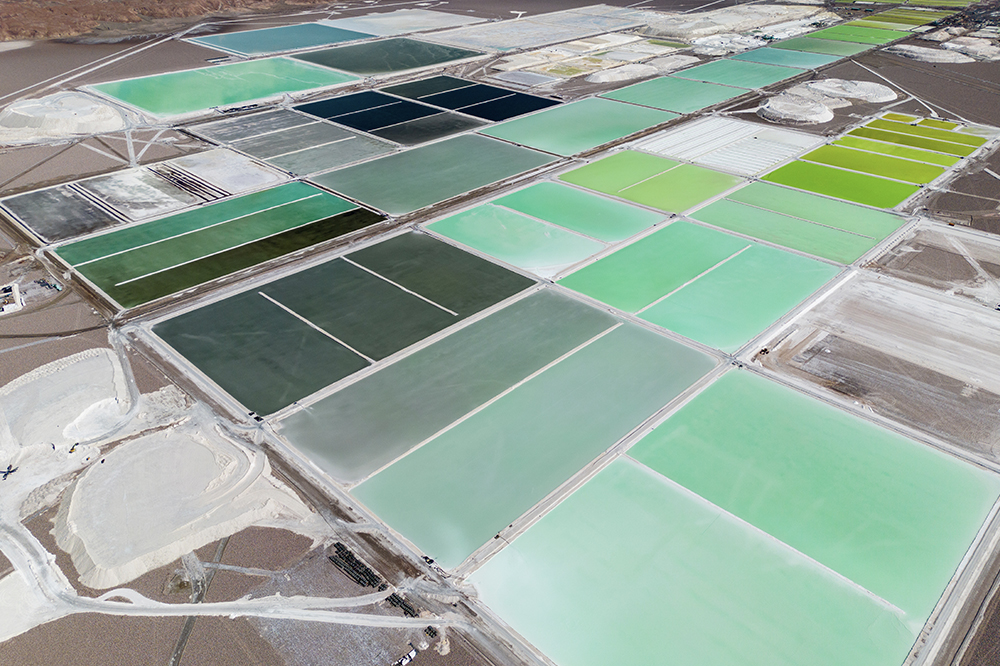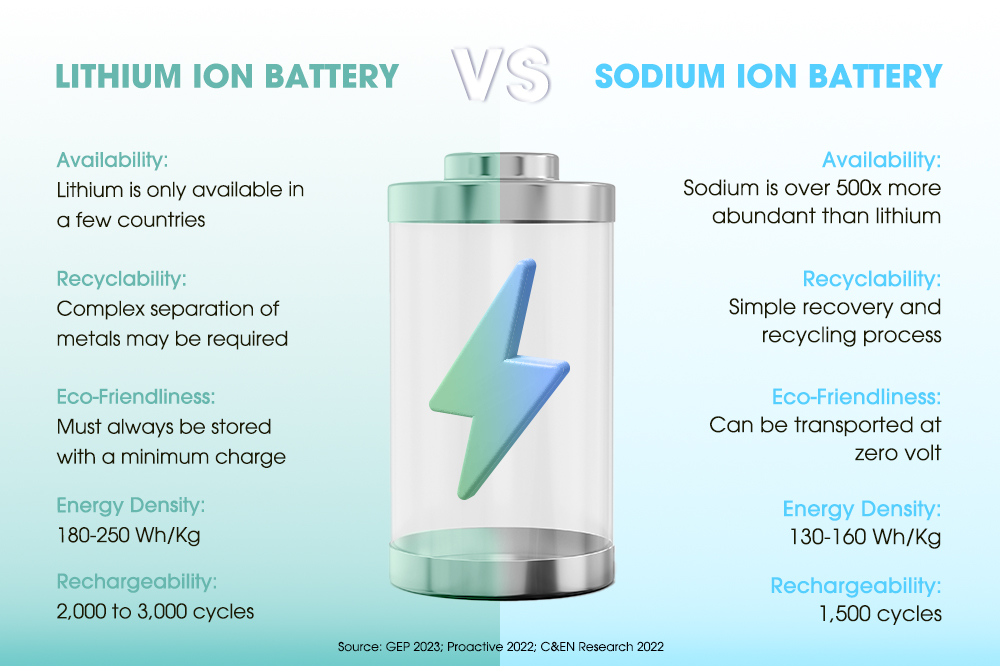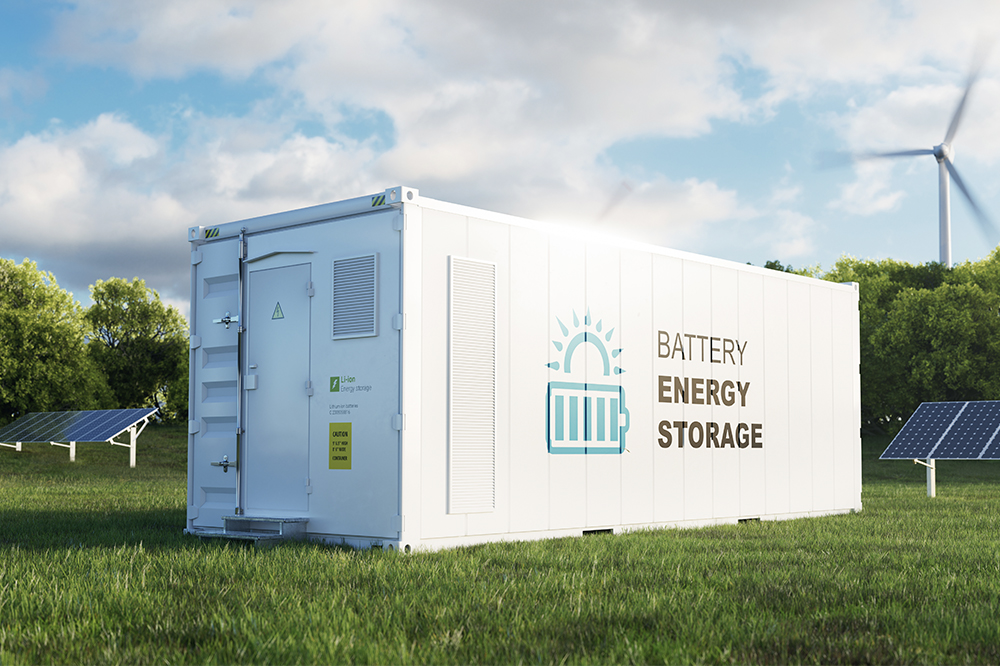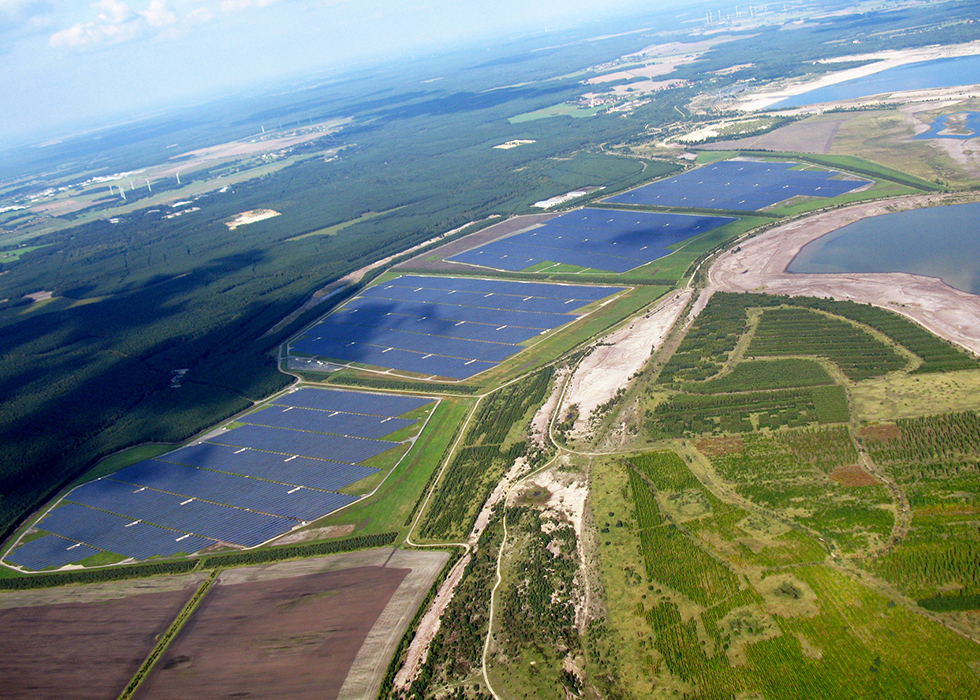Sodium batteries, caustic soda, and the future of electric batteries

In a report released on May 17, the International Energy Agency (IEA) confirmed that clean energy technologies, energy storage, and the critical minerals that power them have had another record-breaking year of expansion.
As clean energy keeps expanding, it is important that storage keeps pace. While energy sources like sunlight are limitless, they are also intermittent, which means the ability to store renewable energy is key to keeping supply steady. This is where batteries come in. In order to triple global renewable energy capacity by 2030 while maintaining energy security, the IEA says that electrical energy storage capacity needs to increase sixfold, and battery technologies will play a large role in achieving this. Effective batteries help expand the use of renewable energy technologies and integrate them into existing power grids.
But most of the batteries on the market today rely on critical minerals like lithium, which are in limited supply. If we are to meet the sixfold capacity target, we’ll need to not only work on bolstering supply chains for critical minerals, but also innovate battery technology. The good news is alternatives to lithium batteries are already being developed. One promising technology is sodium batteries, which use sodium hydroxide, or caustic soda, as their precursor rather than lithium hydroxide. Caustic soda is a highly versatile material used to manufacture a wide variety of products including paper, textiles, detergents, metals, and even lithium batteries. It’s more widely available than lithium and can be made rather than relying on limited pre-existing supplies, meaning sodium batteries that use this material can potentially be manufactured at a greater scale for a lower cost compared to lithium batteries.
To help support the effort to provide lithium battery alternatives — and by extension support the energy transition — companies like Hanwha are working to ramp up the production of the materials, like caustic soda, required in the manufacture of both lithium-ion and sodium-ion batteries. Let’s take a deeper look at these two battery types, the different roles they can play, and why supplying more of their required materials can help us move forward with the drive towards more sustainable energy.

Why are alternative batteries so important?
In today’s rapidly expanding battery market, lithium-ion batteries dominate. Why are lithium batteries so widespread? One reason is because lithium is relatively lightweight — the third-lightest of all the elements — it is able to power everything from small devices like smartphones to cars. Since 2010, lithium-ion batteries have reduced in cost by 90%, and they boast higher energy densities and longer lifespans than ever. These advancements have revolutionized electronic devices and electric mobility.
However, the demand for lithium-ion batteries is catching up with the ability to produce them. Lithium is a critical mineral, one of the materials that is crucial in developing the electric vehicles, wind turbines, solar panels, and other technologies helping drive the energy transition. The IEA has reported that the use of these finite minerals is surging, with demand for lithium on the rise and predicted to outstrip supply as soon as 2025. Noting that lithium demand rose by 30% in 2023, the IEA’s Critical Minerals Outlook 2024 report warned that today’s relatively well-supplied market may not be an accurate guide to the market of the future, underscoring the importance of tackling critical mineral issues well in advance rather than waiting for supply to become more pressured.
Lithium concerns spurred by supply chain bottlenecks, energy security, and geopolitical sensitivities highlight the need to take the pressure off lithium and seek out alternative battery chemistries. One potential contender is sodium batteries. These batteries share many characteristics with lithium ones while replacing the critical mineral lithium with sodium.

Can sodium batteries help ease critical mineral demand?
There are many reasons why sodium is increasingly being explored as a lithium alternative in batteries. Lithium (Li) and sodium (Na) are close neighbors on the periodic table, sitting just below hydrogen. They are both alkali metals that are shiny and soft in appearance, and both have only one electron in their outer shell. This makes them highly reactive and, as a result, ideal for batteries. Sodium batteries are similar in structure to their lithium counterparts, but sodium ions are used instead of lithium ones in the batteries’ cathodes, while sodium salts are used in their electrolyte.
While in use, sodium batteries offer efficient power delivery, quick charging capabilities, stability in varying temperatures and enhanced safety features that prevent overheating or thermal runaway. This makes them safe to store and transport, thanks in part to the ability to discharge sodium to zero volts. But sodium atoms are heavier than lithium atoms, which makes sodium batteries heftier and bulkier than lithium batteries for the same amount of energy.
However, there are some areas where weight is not so crucial. In grid-scale energy storage, home energy storage, and heavy transportation vehicles like trucks and ships, battery size does not have the same impact as it does in the devices we carry around with us and use every day. This makes sodium-ion batteries an excellent fit for more stationary or large-scale applications. In fact, sodium-ion batteries are already in use by some energy companies around the world for renewable energy storage.

Providing the materials that make batteries possible
Replacing lithium with sodium has several advantages in terms of supply and cost. First, sodium is over 500 times more abundant than lithium and can be extracted from seawater and the Earth’s crust. Sodium batteries also use some lower-cost materials than lithium batteries, such as replacing copper with aluminum. There’s also no need for cobalt or graphite. While lithium batteries use the critical mineral lithium hydroxide as a precursor — the cathode’s basic material — sodium batteries use caustic soda, or sodium hydroxide, as a pivotal material in producing cathodes, which and can be extracted from salt using electrolysis.
As well as being a common precursor for sodium batteries, caustic soda is also used in the purification of lithium battery cathodes. When precursor is created by dissolving raw materials such as nickel and cobalt, impurities are produced. Caustic soda is then used to remove these impurities. As the precursor accounts for roughly 70% of a cathode’s cost, caustic soda plays a major role in its manufacture.
Thanks to caustic soda’s wide range of applications, its market is projected to grow from $45 billion in 2022 to $58.9 billion in 2030. As its use in battery production, recycling, and recovery grows, demand will continue to intensify, with battery recycling in particular projected to balloon as a global market from $8 billion in 2022 to $200 billion by 2040.
To meet this present and future demand, the industry must step up caustic soda production. Thankfully, unlike lithium, this is something companies can do without dependence on critical minerals. Hanwha Solutions Chemical Division — South Korea’s largest producer of caustic soda — is expanding its facilities to produce 1.11 million tons annually by the end of 2024. To help maximize the sustainability of this process, Hanwha is striving to reduce its carbon footprint. Promoting a circular economy by increasing the use of renewable energy in its caustic soda production process, the company has received ISCC PLUS certification as a result of these efforts. Through production expansions like these, the global battery market can be better prepared to deliver the materials needed to encourage new technologies while supporting existing ones.

Powering the future of energy storage
In fully leveraging renewables for power, accelerating the pace of improving electric energy efficiency, and meeting the COP28 pledge to transition away from fossil fuels in energy systems, batteries are a key piece of the puzzle. With sodium batteries now matching the energy density of some of the early lithium batteries from a decade ago, they are a technology that is growing fast.
As demand for critical minerals intensifies, companies must focus on reinforcing existing supply chains while exploring new possibilities like sodium. By securing consistent, sustainable supply of materials like caustic soda, companies can facilitate emerging battery chemistry alternatives while continuing to support lithium-based storage solutions and find new ways to power the future.
Get the latest news about Hanwha, right in your inbox.
Fields marked with * are mandatory.
- Non-employee
- Employee





